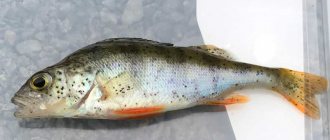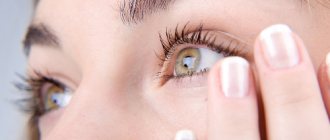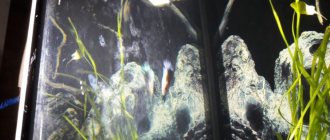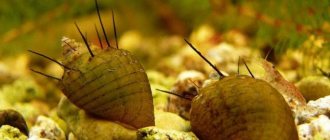How to diagnose and treat
Despite the rather optimistic forecasts for the course of the disease, it should not be ignored. Indeed, in advanced cases, without proper therapy, the situation can worsen.
The diagnosis is made at an appointment with a dermatologist. As a rule, it is not difficult for a doctor to identify a “duck mite” visually. If a person swam in a stagnant body of water, then the likelihood that he has cercariasis is very high.
“The disease is treated with antihistamines as prescribed by a doctor. They also use different chatterboxes to correct the situation - again, the doctor chooses. They have a calming effect on irritated skin, relieve itching and inflammation. The use of corticosteroid ointments may be required. But the last option is used in severe cases,” says Tatyana Egorova.
Article on the topic
Bring it to clean water. How to swim without risk?
Symptoms of cercariasis
Skin itching usually appears 15-20 minutes after attempted penetration. After some time (usually 1-2 hours), a patchy rash appears around the injection site, very severe itching, and swelling is noted.
Mechanical damage to human skin by cercariae and other effects on the body have an active sensitization of the body, a toxic effect - with repeated infections, the symptoms appear much brighter, up to the appearance of papules, blisters, and hemorrhages. The processes are especially difficult in children.
When cercariae penetrate, lysis (destruction) of epidermal cells occurs. This can provoke the addition of a secondary infection, as well as the formation of infiltrates of leukocytes and lymphocytes.
The rash appears in places characteristic of cercariae - the lower part of the legs - on the legs, thighs, and occasionally on the chest and back. Patients note that they feel some tingling and burning at the sites of parasite penetration. Children are more sensitive - that's why they complain of pain and burning.
Since in children the disease is very severe, most often with the development of urticarial rash (acute urticaria). Since children cannot help but scratch the itchy skin, group elements often appear near the injection site - papules and pustules filled with serous-purulent fluid.
In a person with a normally functioning immune system, cercariae die when they try to penetrate the human skin. However, doctors have registered cases of the disease with damage to internal organs - in children with weakened immunity, cercariae spread throughout the body through the bloodstream - this is how they were found in the lungs. Penetrating into internal organs, parasites provoke the development of inflammation and hemorrhage.
Safety measures against infection with fish diseases
To protect yourself from infection with fish diseases caused by parasites, you must follow the recommendations for preparing fish and personal hygiene when cutting:
- You cannot eat raw or half-raw fish, caviar, or planed fish.
- Carefully inspect the fish carcass when cutting, remove all visible parasites, thoroughly clean and rinse with running water. All tools used for cutting fish are also washed.
- Boil or fry the fish for at least 20 minutes at a temperature not lower than 100°C.
- Do not dry fish or salt it. Salt does not kill many pathogens.
Following simple rules will protect you from serious diseases. Fish will remain a healthy product and will not cause any harm.
Causes of atherosclerosis
The fact is that due to systematic additional loads, microdamages can form on the walls of the arteries. Damaged tissues swell. Cells that respond to inflammation (for example, white blood cells) accumulate around the damage, and fat and cholesterol that float in the blood also cling to them - a cholesterol plaque is formed. It is no longer possible to get rid of it using completely non-invasive methods. At the same time, the walls of the vessels become coarser and thinner - this pathological condition is called atherosclerosis, which in turn can lead to coronary artery disease and causes the need for “cleansing of blood vessels”.
Thus, it is important not only to eat right, but also to maintain the functional state of the cardiovascular system.
Vessel cleaning - what is it?
In official medical terminology, there is no such thing as “cleaning blood vessels” - this is everyday slang that is misleading and creates confusion. Unfortunately, it is impossible to remove cholesterol plaques that have already formed and clean a clogged vessel like a water pipe using a magic cleaning agent or “nanothreads”. An entire industry has already formed around the cleaning of blood vessels, however, the drugs and procedures that are offered to solve the problem do not have proven clinical effectiveness, the same applies to traditional methods. Restoring the functional state of the vascular endothelium is much more serious than detox, which is only appropriate for the primary prevention of vascular blockage. With atherosclerosis, when the vessels are narrowed by less than 50%, there is a risk of blood clots, heart attack or stroke
, the doctor prescribes drug therapy (
statins
,
calcium antagonists
and other drugs). However, they do not remove plaques, but compact them, thus increasing the lumen of the vessel. Therefore, it is extremely important to adhere to simple recommendations for the prevention of atherosclerosis.
In colloquial language, “cleaning” is also called cardiac surgery to expand a dangerously narrowed vessel - angioplasty, bypass surgery, stenting
. Their methods differ, but the essence is approximately the same: a catheter is inserted into the vessel, and the damaged, pathologically narrowed area is straightened and strengthened from the inside using implants - special rings, springs or tubes. The need for such operations arises if an atherosclerotic plaque closes the lumen of the vessel (artery) by more than 50%. When the blood supply is so disrupted, cells and organs are not supplied with oxygen and nutrients, and a person’s life can hang by a thread. It happens that a vessel or artery is blocked by a blood clot - a person suddenly feels very tired to the point of loss of consciousness, rapid heartbeat, suspicious pain (headaches, in the area of the heart), suffocates, and the skin turns pale. Such conditions are considered acute, and as a “cleansing” procedure, thrombolysis with special drugs is used on an outpatient basis. After stenting, bypass surgery or angioplasty, blood supply is restored, but it is necessary to take special medications and be observed by a cardiologist.
Black spots on fish
The photograph shows a roach with black spots on it - this fish is sick and the disease is called postodystoplomosis or black-spotted disease.
More than 60 species of freshwater fish can have black spots on fish, and cyprinids such as carp, carp, roach, bream, rudd, ram, roach, chub, white-eye, silver bream, podust and many others are especially susceptible to it.
Who causes black spots on fish?
The causative agent of black spots on fish is a larva belonging to the class of flukes - postodippostomum cuticle. This parasitic worm has a length of 0.5 - 1.5 mm, a width of 0.3 - 0.5 mm, and the body has a compressed appearance in the dorso-abdominal direction. This worm, as an adult, parasitizes fish-eating heron birds.
Cycles of development of the disease postodiplostomosis
Postodiplostomosis has 3 links of development.
The gastropod mollusk, the pond snail, lives in reservoirs, and so it is the first intermediate link in the development of the parasite, the second link is fish, the third and final link is heron birds.
Worms are parasites that live in birds, multiply in their intestines and lay eggs there.
The eggs of such a parasite, along with the birds' feces, fall into the water, and a new development cycle begins. The lid of the egg opens, and the microscopic larva finds a pond snail, where it goes through several stages of its development.
This parasite then leaves the mollusk and enters the environment, where it finds a new host, that is, fish. When parasitic worms penetrate the skin of a fish, they form capsules where they continue to exist. In addition to the fluke, the capsule contains a black pigment - homomelamine, which is a breakdown product of hemoglobin in the blood of the fish, its pigment cells and skin chromatophores - this is how black spots on the fish are formed.
The pigment is deposited not only on the outside, but also on the inside. Black spots can appear in a variety of places - on the gills, fins, on the back, tail, sides of the body, abdomen, and cornea of the eyes.
This disease affects fish of all ages, both juveniles and adults. But the juveniles suffer the most, since with a large number of parasites they die. Fish are infected mainly in spring and summer and in those regions where gray herons are found in large numbers.
But that’s not all - in order for the development cycle of such a parasite to be maintained, there must be a sufficient number of intermediate, as well as definitive, hosts in the reservoir. If there is a small number of individuals of any link, then there will not be a complete development cycle.
Prevention of black-spotted disease
Using the example of pond farming, you can see how black-spotted disease is prevented. After fish are caught in nursery and spawning ponds in the fall, these ponds are not filled with water, that is, they are drained. Filling occurs only before the fish are going to be planted there and as a result it turns out that the mollusks die, and the fish are not subsequently affected by black-spotted disease.
Are black spots on fish dangerous for humans?
This parasite is not dangerous to humans, but, of course, fish that have black spots on it must be subjected to heat treatment, that is, fried, baked, boiled and should not be used for drying and salting.
What other fish diseases exist - you can read about it here.
I recommend reading:
rubakaminfo.ru
Prevention of vascular atherosclerosis
Avoid foods with high cholesterol levels
Limit animal products with high cholesterol content in your diet: lard, fatty meat, offal, fatty dairy products and whole milk, egg yolk. This does not mean that you need to completely abandon animal proteins and fats. The menu should be dominated by vegetables and fruits, complex carbohydrates and cereal fibers, especially fiber. It is important to control sugar levels and not overindulge in sweets and starchy foods - it is better to replace chocolate bars and snacks with dried fruit sweets and nuts, and your body will thank you.
The method of preparing dishes also plays an important role
- before you put meat or scrambled eggs in oil on a hot sizzling frying pan, think about whether it might be better to steam it? It is forbidden? Okay, but for frying it is better to use vegetable oils, such as olive oil.
Citrus fruits also fight fat and cholesterol
, in particular the substance pectin, isolated from
grapefruit
.
Pectin
is a soluble fiber that is found only in citrus fruits themselves, but not in juice.
We get cholesterol from 2 main sources. Most of the cholesterol (about 1 g per day) is produced by our liver - and this is enough.
We get the other part directly from food.
There is another life hack: pay attention to labels in the store, try to avoid products labeled “partially hydrogenated fats”
.
Play sports - train your heart and blood vessels
WHO recommends at least 150 minutes of physical activity per week.
During training, the body is detoxified, and the blood vessels are strengthened - this is also a kind of “cleansing of blood vessels.”
Even after undergoing stenting/bypass surgery, you can play sports and even run a marathon. However, such patients first need to take medications for quite a long time and be observed by a doctor. Patients with cardiovascular diseases need to calculate the permissible level of physical activity and select its optimal option. bicycle ergometry is for.
, which allows you to take stress tests on a device similar to a bicycle with special sensors.
Check your cholesterol levels
Once a year, it is recommended to take a special blood test - a lipid profile - to see if there is an increase in the level of total cholesterol or its fractions. In this way, it is possible to understand in a timely manner whether everything is fine with lipid metabolism or whether drug correction is necessary.
Primary prevention of atherosclerosis and blockage of blood vessels also involves visiting a therapist or cardiologist once a year, even if there are no complaints.
Treat periodontal disease, control sugar levels and body weight
Everything in our body is interconnected. It has been proven that patients with periodontal disease, like patients with diabetes and overweight, are more predisposed to atherosclerosis.
In 2021, the study “Metabolic syndrome and periodontal disease: An overview for physicians”
(Srivastava MC, Verma PK) with important and very interesting conclusions. In patients with poor teeth and a predisposition to atherosclerosis, intensive periodontal therapy after 2 months showed a significant reduction in the levels of c-reactive protein, interleukin-6 and low-density lipoprotein cholesterol.
Measure your blood pressure
The absolute norm for blood pressure in an adult is considered to be 120/80 mmHg, but depending on the individual characteristics of the body, deviations are possible.
Monitor calcium levels and nutrient balance in the body
It is recommended to take additional Omega-3
- the body does not synthesize these beneficial fatty acids on its own - and you need to eat a lot of seafood and season salads only with flaxseed oil to make up for this deficiency. Omega 3 polyunsaturated fatty acids are the basis not only for strong and clean blood vessels, but even a building material for the brain. The average adult is recommended to consume 250 mg of Omega 3 per day throughout his life.
Vitamin K3
prevents calcium from being washed out of the bones and deposited on the walls of blood vessels. Most K₂ is found in fermentation products: cheese and fermented milk products.
Vitamin D and C, coenzyme Q10 are also extremely important for blood vessels
Stay hydrated, give up bad habits and get enough sleep
Drink clean filtered water throughout the day - about 1.5 liters.
The permissible amount of alcohol per day, which does not harm your heart and blood vessels, is 1 glass of good quality red wine; it is better to completely give up smoking.
You can get the maximum benefit from sleep if you sleep for 7-8 hours in a comfortable environment, without light or gadgets, and wake up only with or without an alarm clock.
How to recognize?
Bathers' disease has several characteristic symptoms. “Infection with trematodes manifests itself in rashes where the larvae have penetrated the skin. Accordingly, in essence this is a common allergy,” says the dermatologist. This is not difficult to cure, the specialist notes.
However, there is no need to relax. “The most sensitive people, who have a lot of these larvae embedded in them, may have a fever. True, this symptom does not last long,” says dermatologist Egorova.
A minor nuisance with serious consequences. How to remove water from ears? More details
So the primary picture of infection with trematodes is as follows: itching and redness of the skin develop, and body temperature may also increase.











